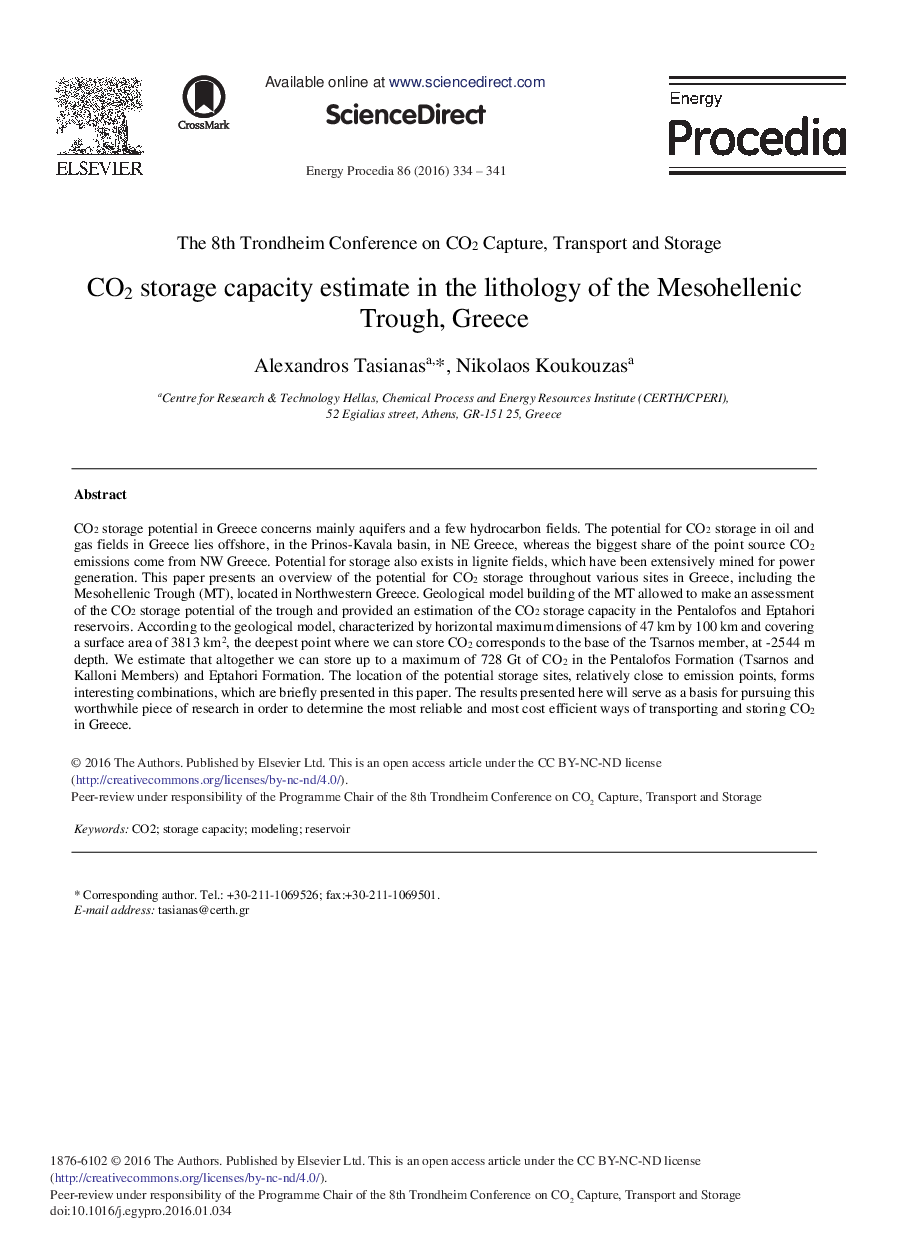| کد مقاله | کد نشریه | سال انتشار | مقاله انگلیسی | نسخه تمام متن |
|---|---|---|---|---|
| 1508935 | 1511149 | 2016 | 8 صفحه PDF | دانلود رایگان |

CO2 storage potential in Greece concerns mainly aquifers and a few hydrocarbon fields. The potential for CO2 storage in oil and gas fields in Greece lies offshore, in the Prinos-Kavala basin, in NE Greece, whereas the biggest share of the point source CO2 emissions come from NW Greece. Potential for storage also exists in lignite fields, which have been extensively mined for power generation. This paper presents an overview of the potential for CO2 storage throughout various sites in Greece, including the Mesohellenic Trough (MT), located in Northwestern Greece. Geological model building of the MT allowed to make an assessment of the CO2 storage potential of the trough and provided an estimation of the CO2 storage capacity in the Pentalofos and Eptahori reservoirs. According to the geological model, characterized by horizontal maximum dimensions of 47 km by 100 km and covering a surface area of 3813 km2, the deepest point where we can store CO2 corresponds to the base of the Tsarnos member, at -2544 m depth. We estimate that altogether we can store up to a maximum of 728 Gt of CO2 in the Pentalofos Formation (Tsarnos and Kalloni Members) and Eptahori Formation. The location of the potential storage sites, relatively close to emission points, forms interesting combinations, which are briefly presented in this paper. The results presented here will serve as a basis for pursuing this worthwhile piece of research in order to determine the most reliable and most cost efficient ways of transporting and storing CO2 in Greece.
Journal: Energy Procedia - Volume 86, January 2016, Pages 334-341